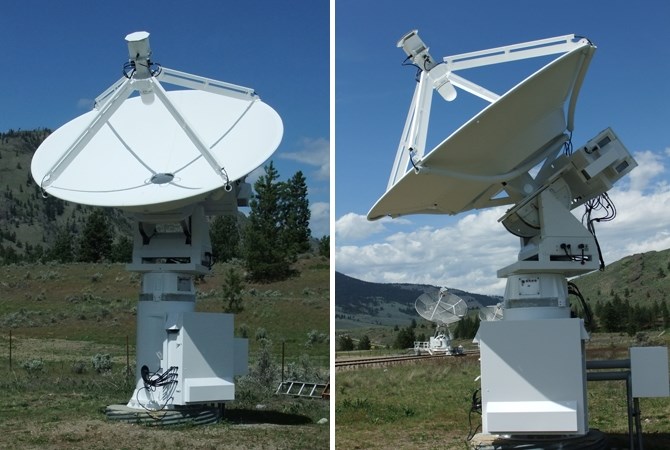
Work on the $2.5 million Next Generation Solar Flux Monitor began five years ago at the Dominion Radio Astrophysical Observatory. It came online only recently, and will be tested for the first time on Monday, Aug. 21, 2017 during the solar eclipse.
Image Credit: SUBMITTED/Ken Tapping
August 17, 2017 - 9:00 PM
PENTICTON – A new multimillion dollar radio telescope in Kaleden will get its first big test during Monday’s solar eclipse.
Ken Tapping of the Dominion Radio Astrophysical Observatory says work on the $2.5 million Next Generation Solar Flux Monitor began five years ago. It came online only recently.
“We realized, even though our old instruments, what we call flux monitors, are producing good data, we needed to start looking at data at multiple wavelengths,” he says. “It’s just in the process of coming online now and our first serious scientific observation is going to be of the eclipse.”
Tapping and his team are now busy doing last minute calibrations of the new monitor, which measures six radio wavelengths instead of only one.
“We will be monitoring the sun at six radio wavelengths as the moon wanders across the sun and blocks out the individual sources (of radiation),” he says. “We’ll be able to see what gets blocked out and when. This will give us a far better picture of where the activity is taking place on the sun, what sort of activity is taking place and the solar physics that relates it to space weather.”
He says those five additional numbers will allow them to better separate the processes that contribute to space weather.
“It should really change things quite a lot.”
Tapping and his team are used to making waves in the scientific community. Three times a day data from their monitor is sent to every weather radar station in North America.
“When you’re looking at the weather forecast on TV they quite often show these weather radar maps,” Tapping says. “These maps are put together as a mosaic by lots of different weather radar across North America. The reason you can make an image like that is because they’re all calibrated to the same source, the sun. They use our measurements for that.”
The moon will begin to block the sun in the Okanagan on Monday, Aug. 21, at 9:12 a.m., reach maximum coverage just before 10:30 a.m. and disappear again shortly before noon.
To contact a reporter for this story, email Adam Proskiw or call 250-718-0428 or email the editor. You can also submit photos, videos or news tips to the newsroom and be entered to win a monthly prize draw.
We welcome your comments and opinions on our stories but play nice. We won't censor or delete comments unless they contain off-topic statements or links, unnecessary vulgarity, false facts, spam or obviously fake profiles. If you have any concerns about what you see in comments, email the editor in the link above.
News from © iNFOnews, 2017